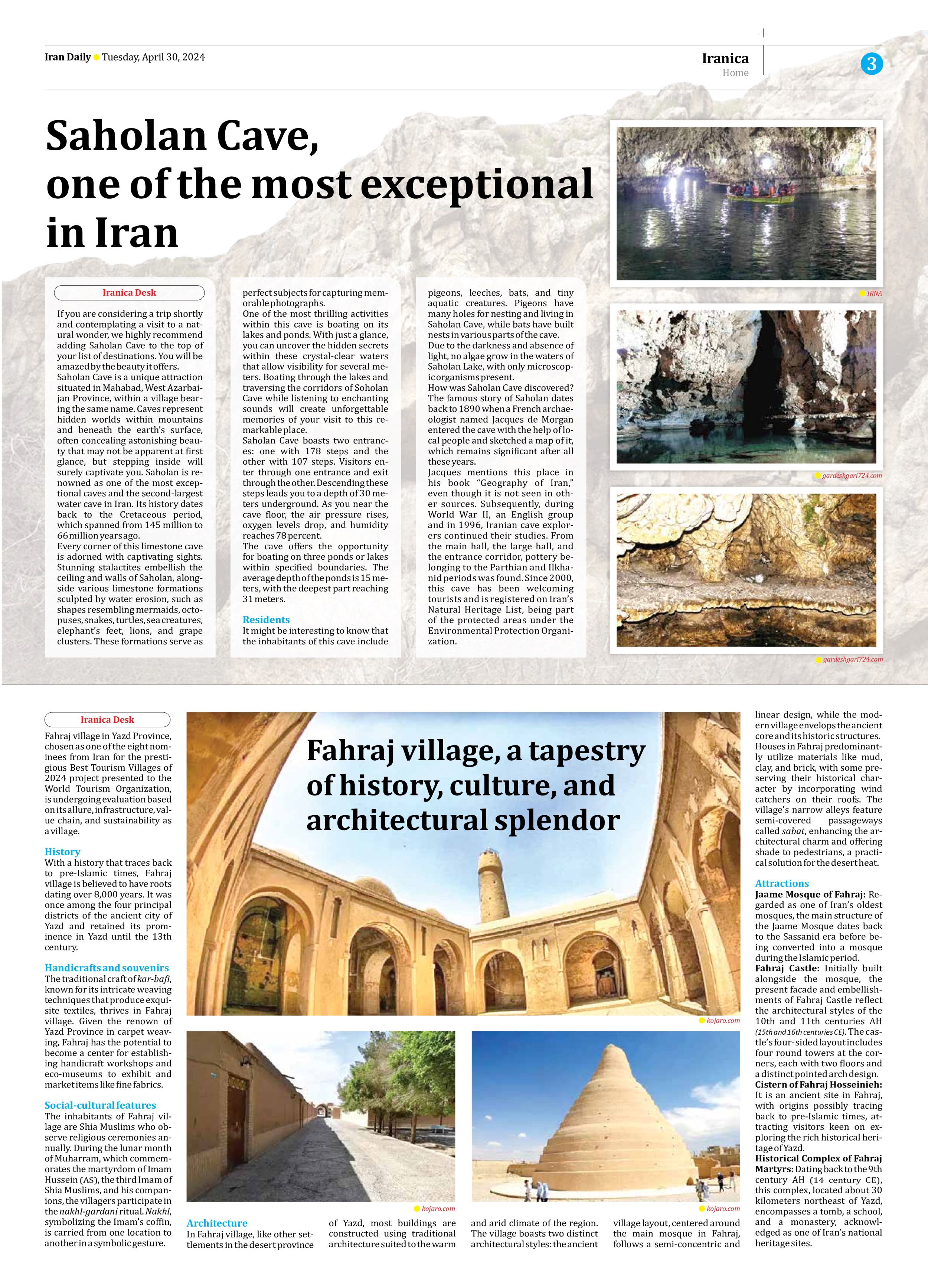
Saholan Cave, one of the most exceptional in Iran
If you are considering a trip shortly and contemplating a visit to a natural wonder, we highly recommend adding Saholan Cave to the top of your list of destinations. You will be amazed by the beauty it offers.
Saholan Cave is a unique attraction situated in Mahabad, West Azarbaijan Province, within a village bearing the same name. Caves represent hidden worlds within mountains and beneath the earth’s surface, often concealing astonishing beauty that may not be apparent at first glance, but stepping inside will surely captivate you. Saholan is renowned as one of the most exceptional caves and the second-largest water cave in Iran. Its history dates back to the Cretaceous period, which spanned from 145 million to 66 million years ago.
Every corner of this limestone cave is adorned with captivating sights. Stunning stalactites embellish the ceiling and walls of Saholan, alongside various limestone formations sculpted by water erosion, such as shapes resembling mermaids, octopuses, snakes, turtles, sea creatures, elephant’s feet, lions, and grape clusters. These formations serve as perfect subjects for capturing memorable photographs.
One of the most thrilling activities within this cave is boating on its lakes and ponds. With just a glance, you can uncover the hidden secrets within these crystal-clear waters that allow visibility for several meters. Boating through the lakes and traversing the corridors of Soholan Cave while listening to enchanting sounds will create unforgettable memories of your visit to this remarkable place.
Saholan Cave boasts two entrances: one with 178 steps and the other with 107 steps. Visitors enter through one entrance and exit through the other. Descending these steps leads you to a depth of 30 meters underground. As you near the cave floor, the air pressure rises, oxygen levels drop, and humidity reaches 78 percent.
The cave offers the opportunity for boating on three ponds or lakes within specified boundaries. The average depth of the ponds is 15 meters, with the deepest part reaching 31 meters.
Residents
It might be interesting to know that the inhabitants of this cave include pigeons, leeches, bats, and tiny aquatic creatures. Pigeons have many holes for nesting and living in Saholan Cave, while bats have built nests in various parts of the cave.
Due to the darkness and absence of light, no algae grow in the waters of Saholan Lake, with only microscopic organisms present.
How was Saholan Cave discovered? The famous story of Saholan dates back to 1890 when a French archaeologist named Jacques de Morgan entered the cave with the help of local people and sketched a map of it, which remains significant after all these years.
Jacques mentions this place in his book “Geography of Iran,” even though it is not seen in other sources. Subsequently, during World War II, an English group and in 1996, Iranian cave explorers continued their studies. From the main hall, the large hall, and the entrance corridor, pottery belonging to the Parthian and Ilkhanid periods was found. Since 2000, this cave has been welcoming tourists and is registered on Iran’s Natural Heritage List, being part of the protected areas under the Environmental Protection Organization.







